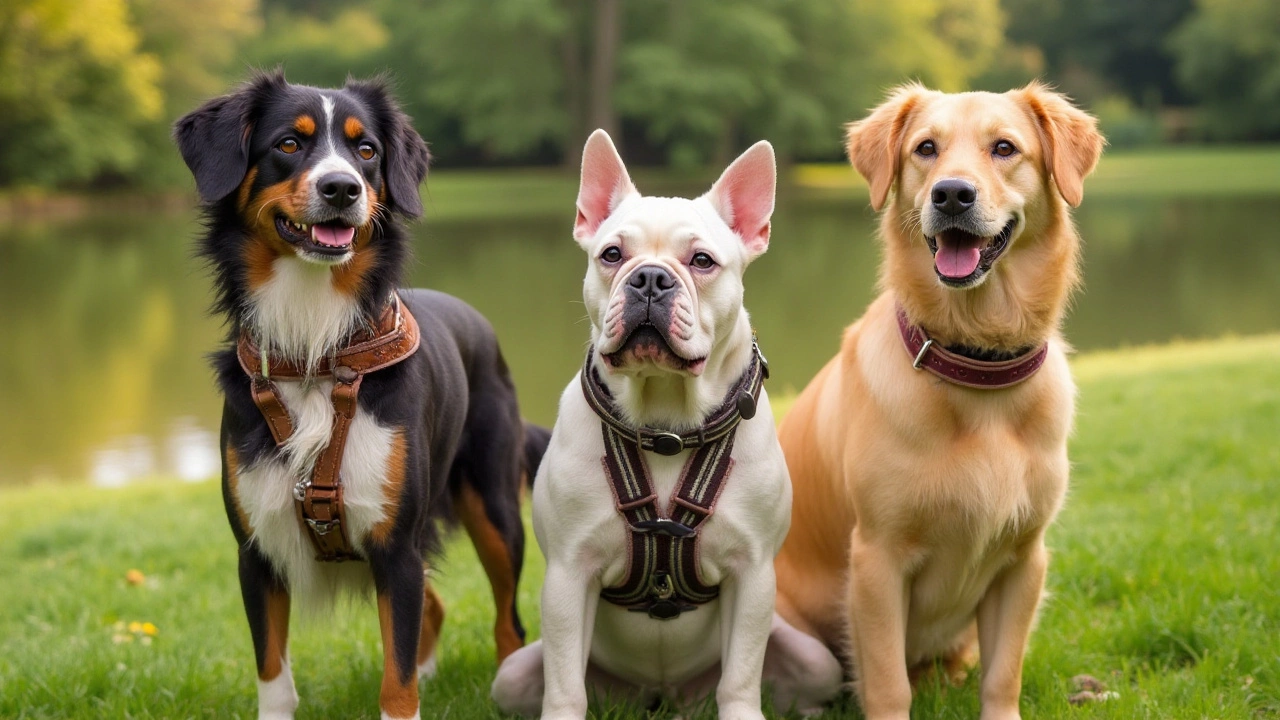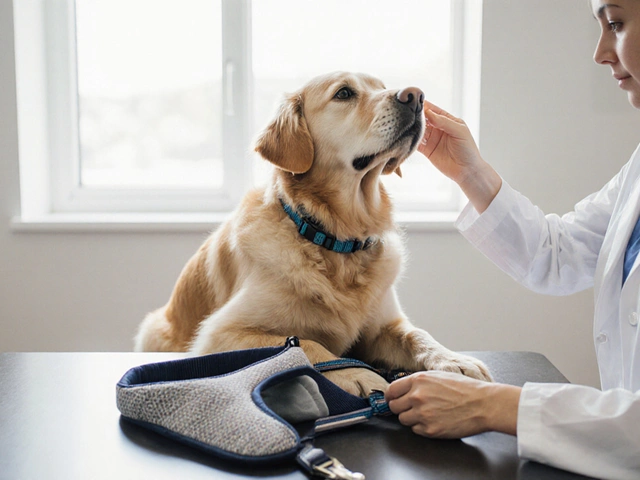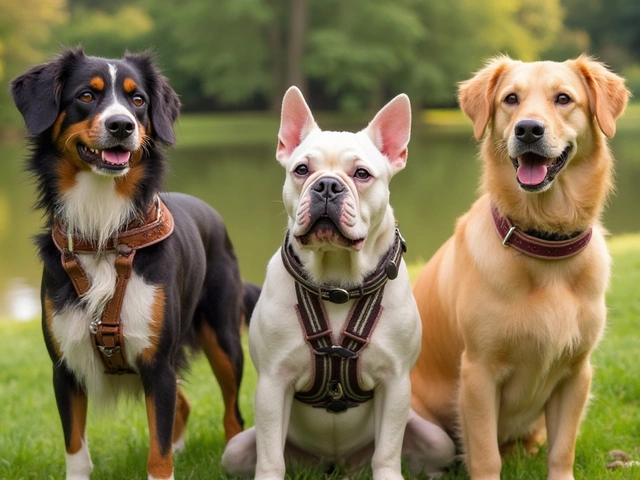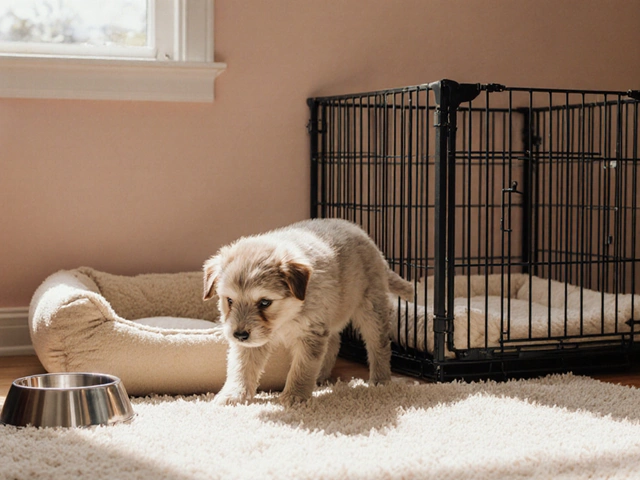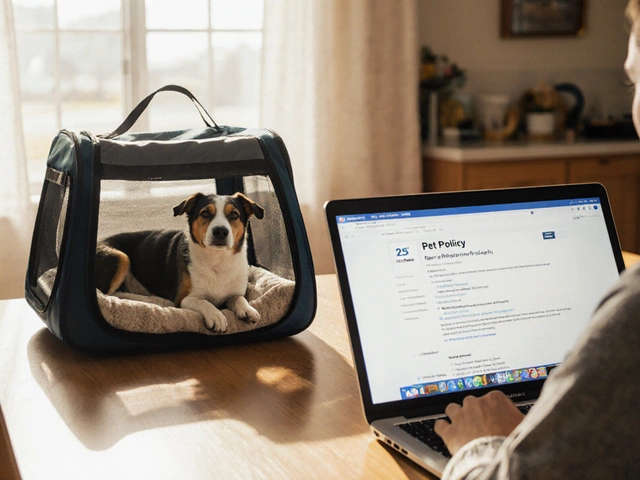Deciding what's best for your canine companion when it comes to collars and harnesses isn't just about style; it's about safety and comfort too. Each dog is unique, so finding the perfect fit requires a bit of understanding and consideration of their specific needs.
Collars have been a staple for holding ID tags and are used predominantly for leash attachment during casual walks. However, there are times when a harness might be the better choice, especially for those energetic dogs prone to pulling or those with delicate tracheas.
This article delves into the roles of each, asking if there's a case for using them together, and offering guidance to help you make the best decision for your furry friend.
- Understanding Collars and Harnesses
- When to Use a Collar
- When a Harness is the Better Choice
- Combining Collar and Harness: Is it Beneficial?
- Tips for Choosing the Right Collar and Harness
Understanding Collars and Harnesses
When it comes to pet care, grasping the role of dog collars and harnesses plays an essential part in ensuring our furry friends' well-being. Traditionally, collars have been the go-to accessory. They're straightforward, conveniently holding identification tags, and are typically the first purchase when welcoming a new dog into a home. Collars come in various materials—from classic leather to robust nylon—each offering a different aesthetic and durability level. Their primary purpose might seem simple, but they double up by providing an easy handle for guiding or restraining a dog, mostly on leisurely walks or quick outings.
Harnesses, on the other hand, have seen a swift rise in popularity among pet owners, and for good reason. They distribute pressure more evenly across a dog's body, often making them a safer choice for vigorous breeds that enjoy pulling or pups with neck sensitivities. The benefits of harnesses are not just anecdotal. Veterinarians often recommend them for breeds such as Pugs or Boston Terriers, whose brachycephalic structure can make traditional collars uncomfortable or even unhealthy. There’s a reason other pet enthusiasts advocate for harnesses as well. A prominent dog trainer once noted, "Harnesses can be more comfortable for dogs and give owners better control," highlighting the control aspect, especially during training.
Interestingly, some studies show that the usage of harnesses reduces the risk of tracheal injuries significantly. But are collars and harnesses exclusive to each other? Not necessarily. In some cases, combining both can be beneficial. A collar can bear the ID tags, while a harness handles the leash attachment—this approach ensures vital contact information remains attached, even if a pet slips out. Different attachments and adjustable straps cater to different sizes and breeds, ensuring comfort and precise fit. Choosing between these two might seem daunting at first, but understanding their individual benefits aids in making a well-rounded decision. As dogs continue to become integral parts of our lives, knowing what suits them best becomes as natural as picking food or toys tailored to their liking.
Renowned canine behaviorist Patricia McConnell emphasizes, "Understanding your dog's needs and behaviors is central to choosing between a collar and a harness, so do it wisely."
When to Use a Collar
Dog collars are not just an accessory; they play a crucial role in pet identification and training. Traditionally, a dog collar is the go-to choice for everyday outings, especially for dogs that are well-behaved on a leash. The collar is typically used to hold their identification tags, making it a practical tool for ensuring your dog's safety and increasing the chance of a quick reunion if they wander off. But the choice of when to use a collar goes beyond just convenience. Experts suggest that collars are best suited for dogs who are comfortable and calm during walks, as they allow easy control without adding pressure. Dogs that have mastered walking by your side without pulling are ideal candidates for wearing a collar. This is primarily because collars can place pressure around a dog's neck, which is something to be cautious about if your pet is excitable or prone to lunging.
Choosing a collar instead of a harness can also be beneficial for certain dog breeds—such as Greyhounds and Whippets—known for having long, slim necks that can comfortably wear a collar without discomfort. However, for breeds with shorter noses or delicate tracheas, like Bulldogs or Pugs, a collar might not be the best option due to potential breathing issues. It's intriguing to note dog training professionals, like those from the American Kennel Club, often advocate using collars for dogs with a stable temperament during obedience training sessions. This is because the direct contact can help with guiding and correction, offering immediate feedback to the dog.
For those still in the training phase, a martingale collar might be a helpful option. Designed to tighten slightly when pulled, it provides gentle guidance without causing harm, particularly for dogs prone to slipping out of regular collars. But remember, these types of collars are for training and should always be used with care. It's important to note the wide variety available, from flat collars for day-to-day use to rolled collars for long-haired dogs to prevent tangling. Therefore, choosing the right collar should take into account your pet's safety, comfort, and the activity you plan to engage in with your dog. As observed in the National Pet Owners Survey, a staggering 68% of dog owners opt for collars as their primary choice, highlighting their widespread appeal.
"A collar gives your dog a sense of identity and is an indispensable part of keeping them safe," says Dr. Julie Buzby, a respected veterinarian.1
However, it's vital to ensure that the collar fits properly. You should be able to slip two fingers between the collar and your dog's neck comfortably. This ensures that it is tight enough to stay secure but loose enough not to choke. Collars are often not recommended when dealing with strong pullers, those training with aversive methods, or dogs recovering from neck or trachea injuries. In such cases, a harness could be more beneficial. Regularly checking the fit and condition of the collar is a necessary routine, especially as dogs grow or their weight fluctuates, which can affect how the collar fits around their neck.
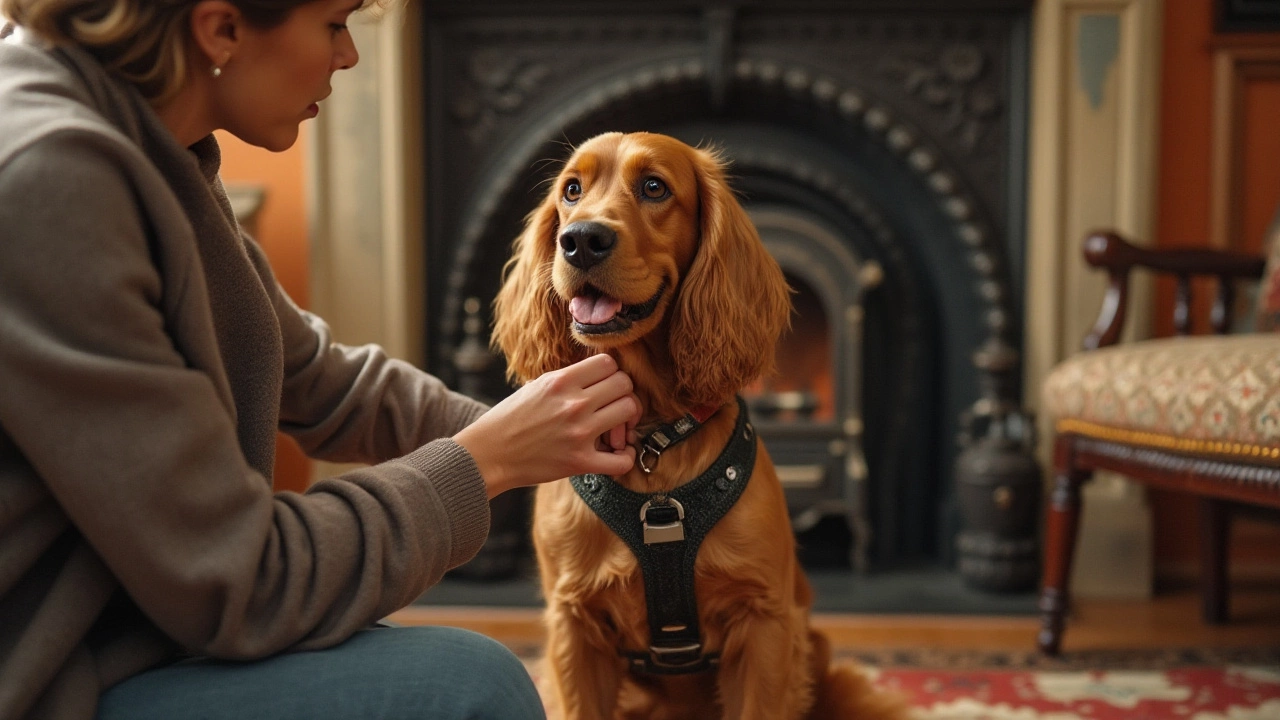
When a Harness is the Better Choice
While collars are fantastic for displaying ID tags and are often a go-to for calm, leash-trained dogs, a dog harness can be a treasure for both you and your furry buddy under certain circumstances. Not every dog is the same, and some breeds thrive more with a harness on their chest rather than a collar around their neck. This tool is especially advantageous for dogs that tend to pull. If your canine buddy is like a mini tank on walks, make sure you're considering a harness. This can prevent those unpleasant gagging noises and give you more control. Dogs prone to tracheal collapse, like Pomeranians and Chihuahuas, benefit immensely from the even pressure distribution of a harness.
For breeds with short noses, notorious for their breathing issues, a harness can be transformative. Pugs, Bulldogs, and other brachycephalic breeds face particular health challenges, and a harness can help alleviate some stress from their delicate necks by redistributing pull pressure. Not to forget, some dogs are simply escape artists! A secure-fitting harness can prevent those wild dashes into the sunset during your neighborhood strolls. Think also about your puppy. Those little bundles of energy thrive with training options like a front-clip harness which enables steering them with minimal force, making training more humane and efficient. An expert from the American Kennel Club stated, "A well-fitted harness can teach a dog not to pull while granting the owner necessary control."
It's worth considering the various designs available while choosing a harness. Some feature a back clip or even ones with both front and back attachments, catering to specific training needs. There's also a potential benefit for joint health. The pressure from a collar can exacerbate joint stress in at-risk breeds, whereas a harness can offer better load distribution. In addition to the apparent benefits, many harnesses come with reflective features, increasing your dog's visibility during low-light situations. Especially in environments bustling with activity, it ensures both safety and style, keeping your pup easy to spot. Harnesses can also aid in adaptive uses, such as aiding older dogs with mobility issues.
In a world where several choices bombard us with options, understanding when a harness fits into the picture best helps ensure your friend not only looks dashing but is also secure and content. So, explore the options and see if the harness suits your canine friend's lifestyle needs. You might be pleasantly surprised by the increase in confidence and the bond you'll share during those beloved outings, all thanks to the simple change of choosing a harness.
Combining Collar and Harness: Is it Beneficial?
Mixing a collar and a harness can seem a little unnecessary, right? But in many instances, using both can actually bring unexpected benefits to your dog's life. In particular, combining these accessories is often advocated by pet trainers and veterinarians who consider both safety and training effectiveness. Let’s unfold why this dual approach might just be what your pet needs.
A key reason to use both a dog collar and a dog harness is the added control and security it offers during walks. While a harness distributes pulling pressure across the body, minimizing strain on your pup's neck, a collar still holds their identification tags. Imagine a scenario where your dog wiggled out of their harness, which happens more frequently than dog owners would like to admit. Having a collar on top ensures that, identification-wise, they're secure, even in an unlikely escape.
Some trainers recommend collars as a secondary tool for training purposes. A harness can provide support without encouraging pulling behavior, but combining it with a collar offers precise steering for those still learning the art of proper walking etiquette. You can utilize the collar for brief corrective training cues without risking choking.
“The best way to ensure you’re doing right by your dog is understanding its unique temperament and physical needs,” shares Dr. Stanley Coren, a noted expert in canine behavior. “Both collars and harnesses have their place, but pairing them can cater to different nuances of training and comfort.”
Connecting these two components can be especially beneficial for certain dog breeds prone to respiratory issues or neck problems. Breeds like the French Bulldog or Pug, known for their short, delicate tracheas, are better suited to wear a harness. Yet, keeping a collar with a proper ID tag is equally important to ensure they are identified if they wander off.
Considerations When Combining a Collar and Harness
- Sync the Fit: Ensure both the collar and harness fit properly. Neither should be too tight or too loose, allowing for just 2 fingers gap.
- Durability: Prioritize high-quality materials built to withstand wear and tear. Collars and harnesses vary in material; choose one that suits your dog's activity level.
- Combining Mechanisms: Look for designs that avoid tangling or discomfort. You don't want them to fight against each other or create pressure points.
While there are clear benefits, keep your dog's comfort in mind. Monitor their behavior wearing both; if they seem distressed, it might be worth rethinking your approach. Always adjust based on their reactions, as they are the best judge of their comfort.
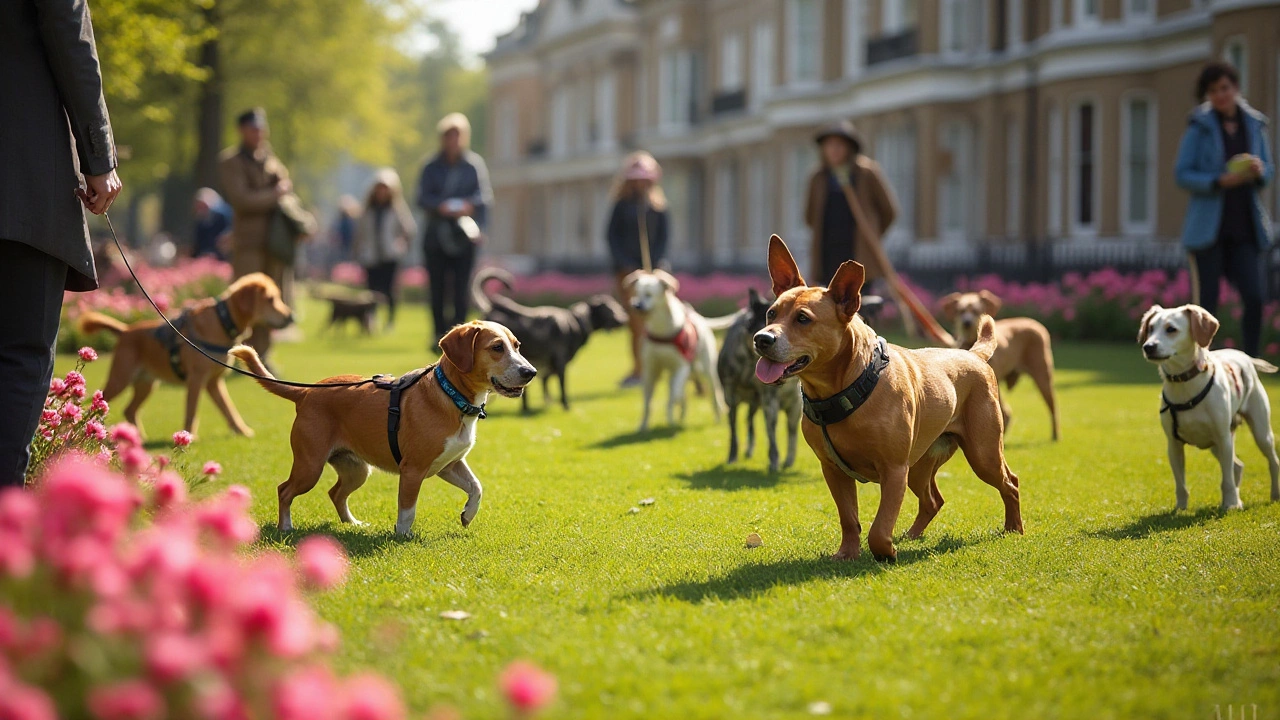
Tips for Choosing the Right Collar and Harness
Choosing the right dog collar or dog harness for your furry friend isn't just about personal preference; it's closely tied to your pet's comfort, safety, and behavioral needs. First, it's essential to consider your dog's size, breed, and temperament. Large breeds like Great Danes may require sturdier materials, while smaller breeds like Chihuahuas might benefit from softer, lighter options to avoid irritation. Breed-specific features can also influence your decision; for example, some dogs have delicate tracheas that might be bruised or injured by a collar if they pull too hard against it during walks.
Material is another significant factor. Nowadays, you'll find collars crafted from various materials such as nylon, leather, or even eco-friendly hemp. Nylon collars are widely favored due to their affordability and durability, but leather options deliver a classic look blending style and robustness. Meanwhile, hemp collars offer a sustainable option without compromising on strength. It can be beneficial to assess any allergies your dog might have beforehand to prevent any adverse reactions. The harness choice similarly presents a range of materials where comfort and strength need to be balanced according to your daily activities and your dog’s demeanor.
Understanding Styles and Functions
The styles of collars and harnesses also make a big difference. A flat collar is the most common type, perfect for holding ID tags; however, if your dog tends to pull on the leash, a martingale collar can provide gentle corrective pressure without choking. Meanwhile, harnesses come in various styles, like the back-clip style, which is common for casual walks, and the front-clip style, designed to discourage pulling by redirecting your dog's attention. You should consider what you need most during walks: more control over your dog, or simply a mode to connect a leash while still ensuring comfort.
With the functionality clearly defined, one should remember to measure carefully. A good rule of thumb with collars is to ensure that two fingers can fit snugly beneath the collar while it is on your dog; this helps you find a balance that is neither too loose nor too tight. For harnesses, spend some time adjusting the straps when you first try it on your dog. A proper fit is crucial since an ill-fitting harness can lead to discomfort or even chafing and injury. Accurately sizing the harness can also prevent your dog from slipping out of it, particularly in unexpected situations.
"When selecting pet accessories, prioritize fit and material above aesthetics. It ensures the practical comfort and safety of our animal companions," advises Fiona Smith, a renowned pet behaviorist.
It’s worthy to mention the modern features available too. Reflective collars and harnesses can be lifesavers during evening strolls, enhancing visibility in low-light conditions. Some options even come with GPS tracking capabilities, giving you peace of mind knowing that your furry companion can be easily located if they wander or escape. These technological advancements have brought new layers of safety and awareness that are worth exploring during your selection process.
Cost and Durability
Price is a consideration for most pet owners; however, remember that investing in a good-quality collar or harness is a commitment to your dog's safety and comfort. Quality often correlates with durability, meaning fewer replacements and a better fit for longer durations. Experimenting with a few different models within your budget can often lead you to the best choice for your pet. After all, the right tools not only enhance the experience of daily walks but also nurture the bond between you and your pet, fostering trust and mutual understanding.
